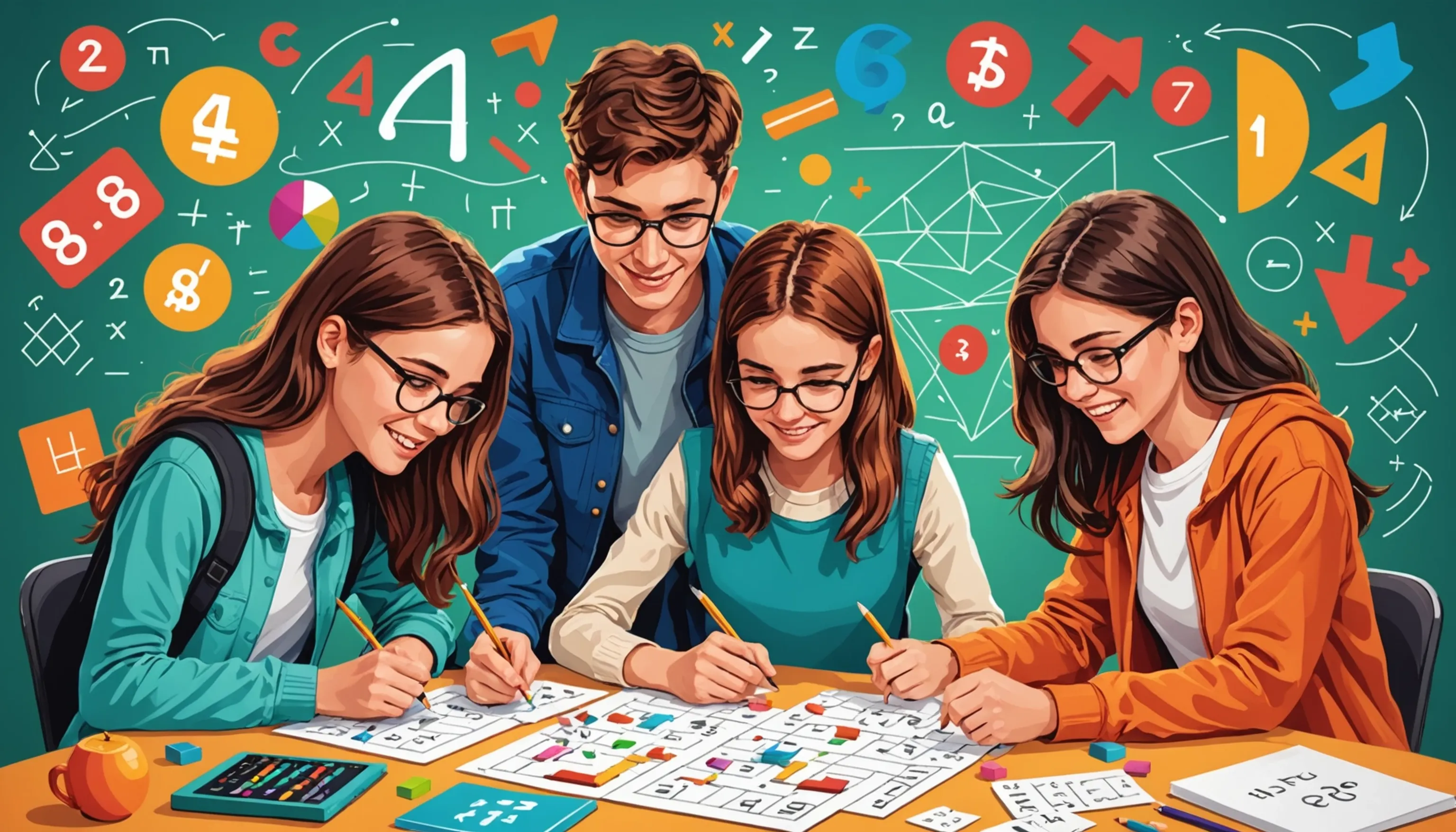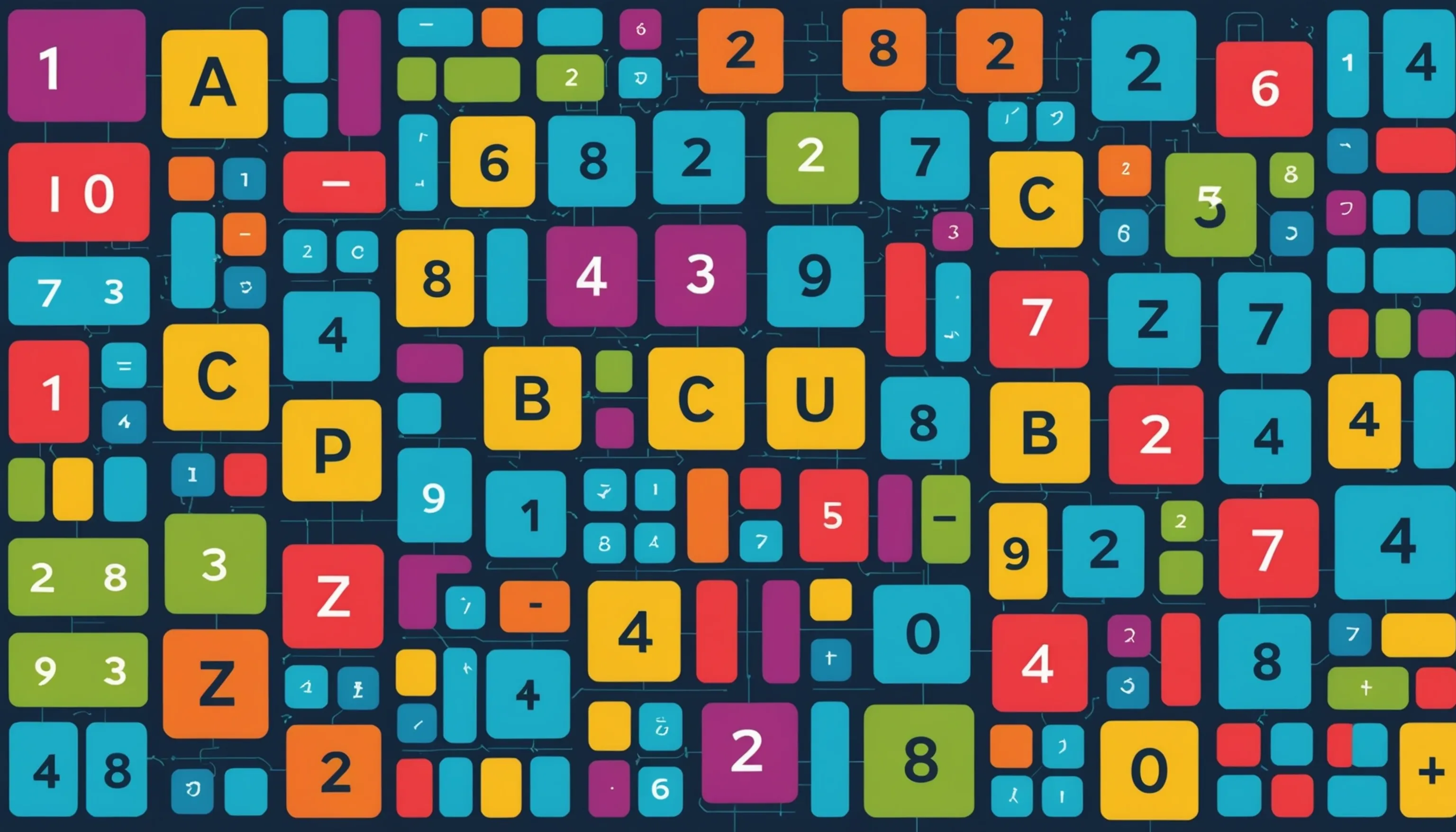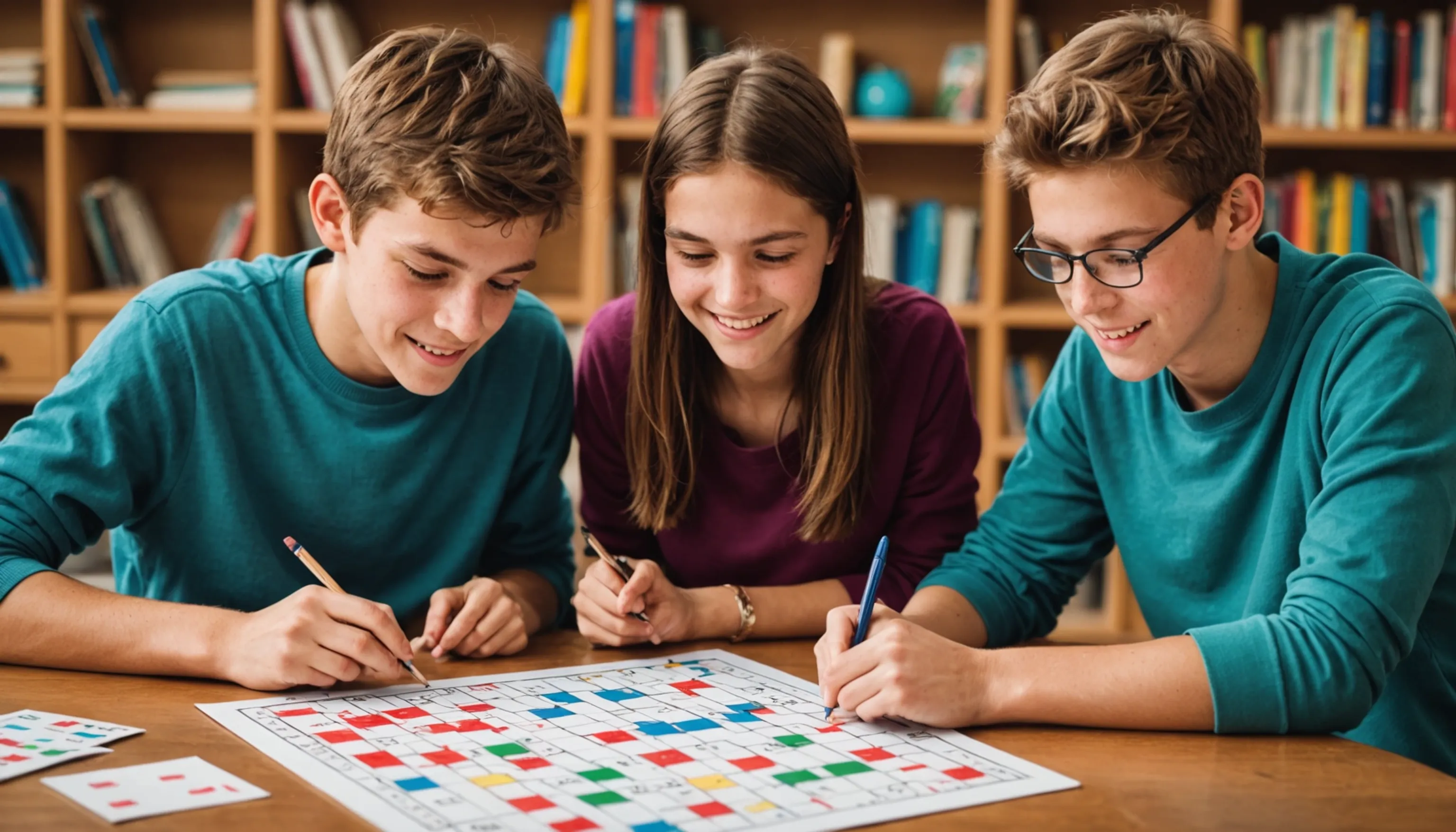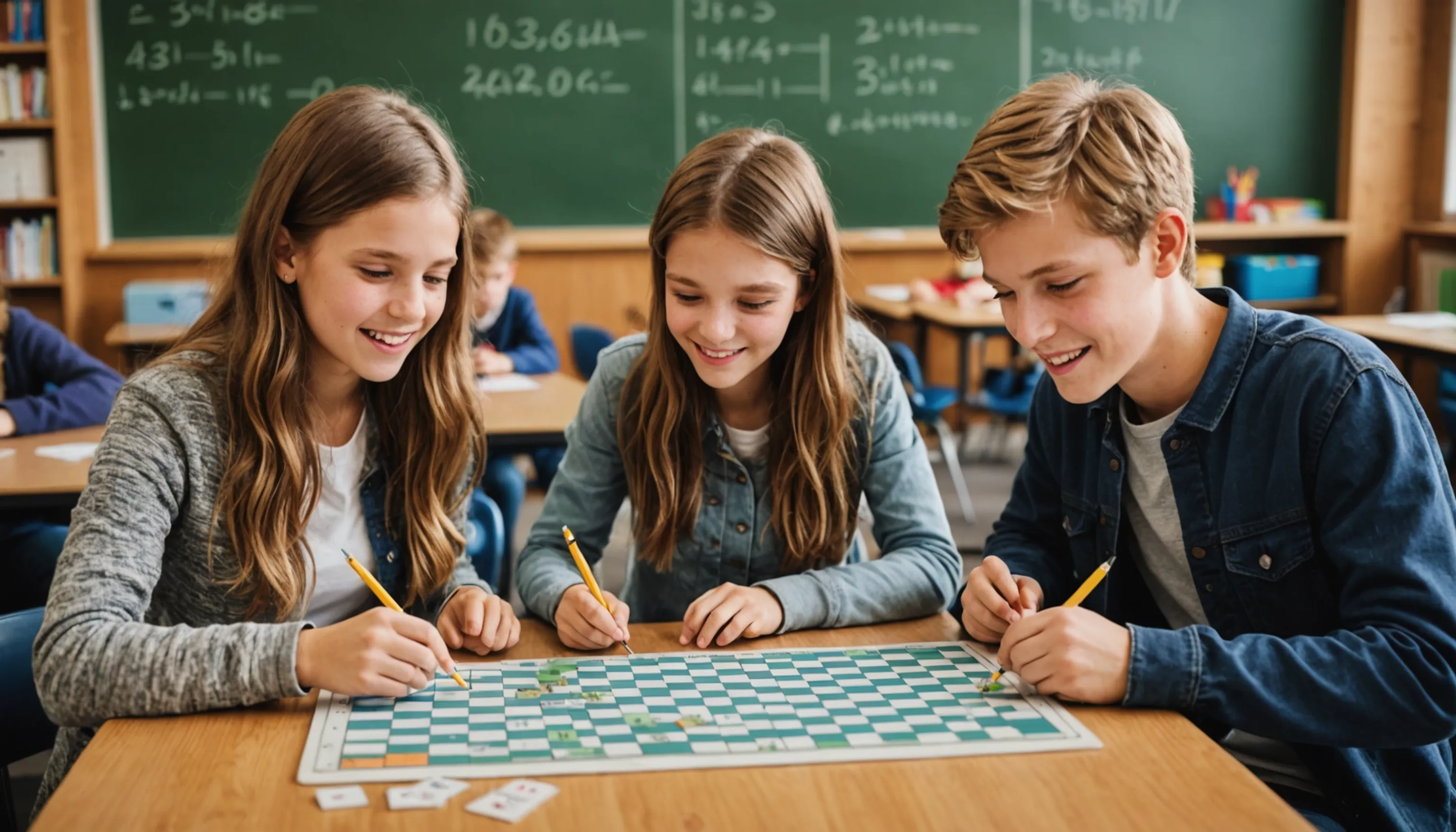Math Puzzles and Brain Teasers for Fun Learning
 HvWHenry van Wagenberg
HvWHenry van Wagenberg
Math Puzzles and Brain Teasers for Fun Learning
Math puzzles and brain teasers are excellent tools for making learning enjoyable for teenagers. These engaging activities not only challenge students but also foster critical thinking and problem-solving skills. By presenting math concepts in a fun way, students are more likely to stay interested and motivated in their studies.
Incorporating these puzzles into the learning process helps to reinforce mathematical concepts while providing a break from traditional teaching methods. Whether it’s solving a tricky logic puzzle or tackling a challenging number riddle, students gain confidence as they navigate through these fun learning experiences.
Benefits of Math Puzzles for Teenagers
Math puzzles offer numerous benefits for teenagers, making them an essential part of the learning process. One of the primary advantages is that they enhance critical thinking skills. As teenagers tackle various puzzles, they learn to analyze problems, identify patterns, and devise strategies to find solutions. This type of cognitive engagement is crucial for developing a strong mathematical foundation.
Additionally, math puzzles promote creativity. When faced with unconventional problems, teenagers must think outside the box and approach challenges from different angles. This creative thinking not only applies to mathematics but also translates to other subjects and real-life situations.
Another significant benefit is the improvement of perseverance. Math puzzles often require multiple attempts to solve, teaching teenagers the importance of persistence. They learn that failure is a part of the learning process and that success often comes after several tries.
Moreover, these puzzles can foster a sense of accomplishment. Successfully solving a challenging puzzle boosts self-esteem and encourages students to take on more complex problems. This positive reinforcement can lead to a greater interest in mathematics overall.
Finally, math puzzles can enhance collaboration skills. When teenagers work in groups to solve puzzles, they learn to communicate effectively, share ideas, and build teamwork skills. This collaborative learning environment not only makes math more enjoyable but also prepares them for future academic and professional settings.

Types of Math Puzzles and Brain Teasers
There are various types of math puzzles and brain teasers that can engage teenagers and enhance their learning experience. Here are a few popular categories:
- Logic Puzzles: These puzzles require deductive reasoning and critical thinking. They often present scenarios where students must identify relationships and make inferences.
- Number Puzzles: These include riddles and challenges involving numerical patterns or operations. Examples are Sudoku and magic squares, which develop computational skills.
- Geometry Puzzles: These puzzles focus on shapes, sizes, and spatial reasoning. They can involve calculating areas, perimeters, or understanding geometric properties through engaging challenges.
- Word Problems: These puzzles combine math with real-world scenarios, requiring students to translate textual information into mathematical equations.
Each type offers unique challenges and encourages different aspects of mathematical thinking, making learning enjoyable and effective.
Logic Puzzles
Logic puzzles are a fascinating type of math challenge that require critical thinking and reasoning skills. These puzzles often present a scenario with a set of conditions and require solvers to deduce the correct answer based on the given information. They can take various forms, including riddles, grid puzzles, and deduction puzzles, making them versatile tools for learning.
One common example of a logic puzzle is the classic “who owns the fish?” riddle, where participants must use clues to determine the ownership of pets among different colored houses. Such puzzles encourage teenagers to think logically and methodically, honing their problem-solving abilities.
Logic puzzles can also be collaborative, allowing students to work in teams. This teamwork fosters communication and sharing of ideas, promoting a deeper understanding of logical reasoning. Students learn to articulate their thought processes and consider different perspectives, enhancing their collaborative skills.
Additionally, engaging with logic puzzles can improve concentration and focus. As teenagers navigate through complex problems, they learn to maintain attention and work through distractions, skills that are beneficial in all areas of study.
By incorporating logic puzzles into the curriculum, educators can create an interactive and stimulating learning environment that not only reinforces mathematical concepts but also develops essential life skills.

Number Puzzles
Number puzzles are engaging challenges that help teenagers enhance their mathematical skills while having fun. These puzzles often involve patterns, sequences, or mathematical operations that require students to think critically and creatively. One popular type of number puzzle is Sudoku, where players fill a grid with numbers, ensuring that each column, row, and section contains all digits without repetition. Sudoku not only sharpens logical reasoning but also improves concentration.
Another fascinating category of number puzzles is magic squares. In a magic square, the sum of the numbers in each row, column, and diagonal must be the same. Solving these puzzles requires a keen understanding of arithmetic and number relationships, making them an excellent tool for developing mathematical reasoning.
Additionally, riddles that involve numbers, such as those requiring students to find a number based on given clues, promote critical thinking. For example, a riddle may state, “I am an odd number. Take away one letter, and I become even.” Such problems encourage students to think outside the box and explore the properties of numbers.
Incorporating number puzzles into the classroom can create a dynamic learning environment. By working individually or in groups, teenagers can foster teamwork and communication skills. Overall, number puzzles are a valuable resource for developing mathematical proficiency while keeping students engaged and entertained.
Geometry Puzzles
Geometry puzzles are an exciting way for teenagers to explore the concepts of shapes, sizes, and spatial relationships. These puzzles challenge students to apply their knowledge of geometry in creative and engaging ways. One popular type of geometry puzzle is the Tangram, an ancient Chinese puzzle that consists of seven flat pieces called tans. The objective is to rearrange these pieces to form a specific shape without overlapping. This puzzle helps improve spatial reasoning and enhances problem-solving skills.
Another common geometry puzzle involves geometric transformations, such as rotations, reflections, and translations. Students may be asked to manipulate shapes in various ways, leading to a deeper understanding of geometric properties and relationships. For example, puzzles that ask students to find the area or perimeter of irregular shapes encourage critical thinking and application of formulas.
Additionally, visual puzzles that require students to identify congruent or similar shapes can be incredibly beneficial. These activities help reinforce the concepts of similarity and congruence while sharpening observational skills.
Incorporating geometry puzzles into math lessons can create a dynamic classroom environment where students actively engage with the material. Working on these puzzles individually or in groups fosters collaboration and communication skills. Ultimately, geometry puzzles not only make learning enjoyable but also help teenagers build a solid foundation in geometric concepts that are essential for higher-level math.
How to Use Puzzles in Teaching Math
Integrating puzzles into math teaching can significantly enhance student engagement and understanding. Start by incorporating a variety of puzzles, such as logic problems, number riddles, and geometry challenges, to cater to different learning styles. Use puzzles as warm-up activities to stimulate critical thinking before diving into new concepts.
Encourage group work by having students collaborate on puzzles, promoting teamwork and communication skills. Additionally, use puzzles to assess understanding; they can serve as informal assessments to gauge student progress. Ultimately, incorporating puzzles makes learning math fun and effective, fostering a positive classroom environment.
Incorporating Puzzles into Lesson Plans
Incorporating puzzles into lesson plans can transform traditional math instruction into an engaging and interactive experience. Start by identifying the key concepts you want to teach and selecting appropriate puzzles that align with these topics. For instance, when introducing algebraic equations, consider using logic puzzles that require students to apply algebraic reasoning to solve problems.
One effective strategy is to use puzzles as a warm-up activity at the beginning of the lesson. This approach not only stimulates interest but also activates prior knowledge, helping students transition into the new material. Additionally, you can use puzzles as a closing activity, allowing students to apply what they've learned in a fun, hands-on way.
In group settings, assign different puzzles to small teams and encourage collaboration. This fosters communication and teamwork while allowing students to learn from each other. You can also incorporate technology by using online puzzle platforms, making it easier to access a variety of math puzzles that can be integrated into your curriculum.
Assessment is another area where puzzles can be beneficial. Consider using puzzles as informal assessments to gauge student understanding and identify areas that may need reinforcement. By incorporating puzzles into lesson plans, you create an engaging learning environment that promotes critical thinking, problem-solving skills, and a love for mathematics.
Encouraging Group Work with Puzzles
Encouraging group work with puzzles in the math classroom can significantly enhance collaboration, communication, and problem-solving skills among teenagers. When students work together on puzzles, they learn to share ideas, discuss strategies, and support each other through challenges. This collaborative environment fosters a sense of community and helps build interpersonal skills that are essential for future success.
To effectively incorporate group work with puzzles, start by forming diverse teams. Mixing students with varying skill levels can create opportunities for peer teaching, where stronger students can help their classmates grasp challenging concepts. Assigning specific roles within each group, such as a leader, recorder, or presenter, can also encourage participation and accountability.
Choose puzzles that require teamwork to solve, such as multi-step logic problems or complex geometry challenges. These types of puzzles necessitate discussion and collaborative problem-solving, allowing students to combine their strengths and perspectives. Set clear expectations for group interactions, emphasizing respect, active listening, and constructive feedback.
After completing the puzzles, facilitate a class discussion where groups share their strategies and solutions. This reflection not only reinforces learning but also highlights the importance of collaboration in problem-solving. By integrating group work with puzzles into your math curriculum, you create an engaging and interactive learning environment that encourages students to work together, enhancing their understanding of mathematical concepts.
